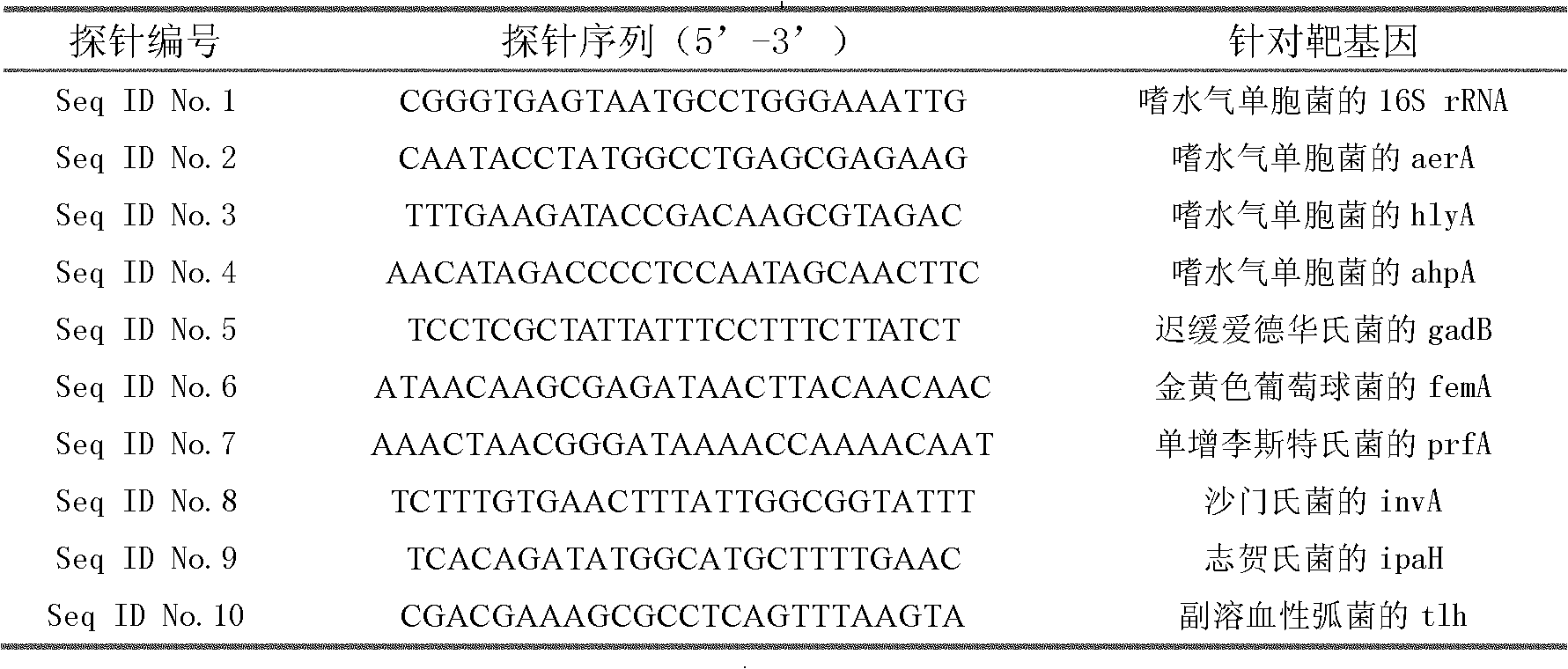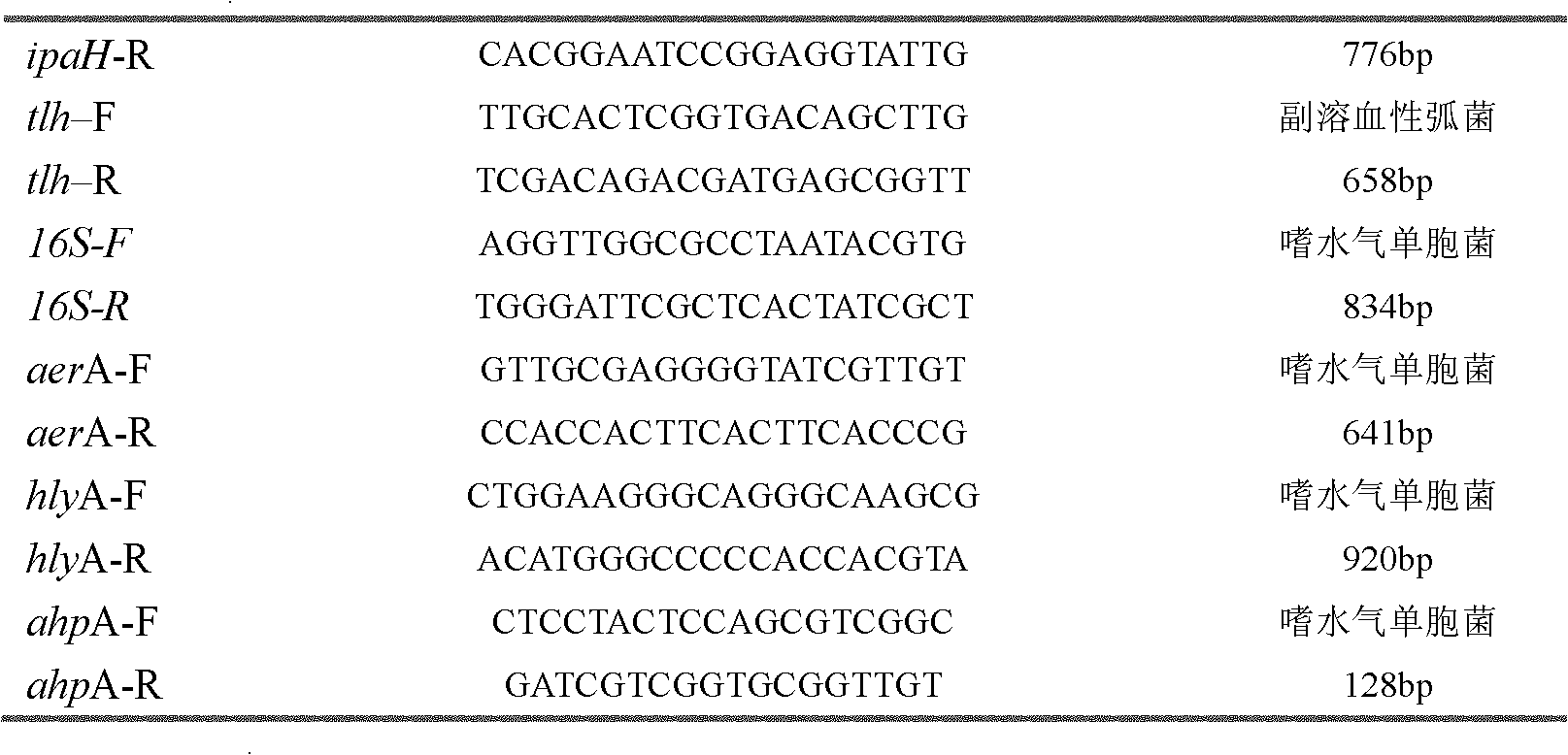Gene chip and applications thereof in detection of aquatic pathogenic microorganism
A gene chip and gene technology, applied in the field of aquatic pathogenic microorganism detection gene chip, can solve the problem of time-consuming and labor-intensive
- Summary
- Abstract
- Description
- Claims
- Application Information
AI Technical Summary
Problems solved by technology
Method used
Image
Examples
Embodiment 1
[0028] The establishment of embodiment 1 Aeromonas hydrophila PCR detection system
[0029] Aeromonas hydrophila (Aeromonas hydrophila) belongs to Aeromonas family (Aermonadaceae) Aeromonas (Aeromonas), is an opportunistic pathogenic bacteria shared by humans, livestock and aquatic animals. The bacterium widely exists in the water environment and is the main pathogenic bacterium of various aquatic animals. Aeromonas hydrophila is an opportunistic pathogen that widely exists in nature, especially in water environments. The virulence of Aeromonas hydrophila varies greatly, and non-toxic strains exist widely. Traditional bacterial isolation and identification must be combined with biological or serological methods of toxins to determine its pathogenicity, which is time-consuming, laborious and not sensitive; due to the existence of aer + hp - genotype and aer - hp + For pathogenic strains of genotype, the PCR method established for aer or a such as a single gene may have mis...
Embodiment 2
[0044] Example 2 Establishment of Vibrio parahaemolyticus PGR detection system
[0045] Vibrio parahaemolyticus is one of the important pathogens causing food poisoning in aquatic products, and it is an important indicator in food safety testing. In my country's coastal areas, food poisoning caused by Vibrio parahaemolyticus accounts for the first place in bacterial food poisoning incidents. The statutory detection method of Vibrio parahaemolyticus is still the traditional culture method, which is cumbersome, time-consuming and laborious, and often takes 5-6 days to complete.
[0046] The main virulence factors of Vibrio parahaemolyticus include a variety of hemolytic toxins, mainly thermolabile direct hemolytic toxin (TLH), thermotolerant direct hemolytic toxin (TDH) and thermotolerant direct hemolytic toxin (TRH), which are composed of tlh, tdh and trh genes encode. The Tlh gene exists in all Vibrio parahaemolyticus and is species-specific. Therefore, specific primers t...
Embodiment 3
[0047] The establishment of other aquatic pathogenic bacteria PCR detection system of embodiment 3
[0048] With reference to the ideas in Examples 1 and 2, by optimizing the PCR amplification conditions and perfecting the design of primers, the PCR detection system for common aquatic pathogenic microorganisms such as Edwardsiella tarda was determined. The amplification conditions are shown in Table 6.
[0049] Table 6 PCR amplification primers for common aquatic pathogenic microorganisms
[0050]
PUM
 Login to View More
Login to View More Abstract
Description
Claims
Application Information
 Login to View More
Login to View More - R&D
- Intellectual Property
- Life Sciences
- Materials
- Tech Scout
- Unparalleled Data Quality
- Higher Quality Content
- 60% Fewer Hallucinations
Browse by: Latest US Patents, China's latest patents, Technical Efficacy Thesaurus, Application Domain, Technology Topic, Popular Technical Reports.
© 2025 PatSnap. All rights reserved.Legal|Privacy policy|Modern Slavery Act Transparency Statement|Sitemap|About US| Contact US: help@patsnap.com



